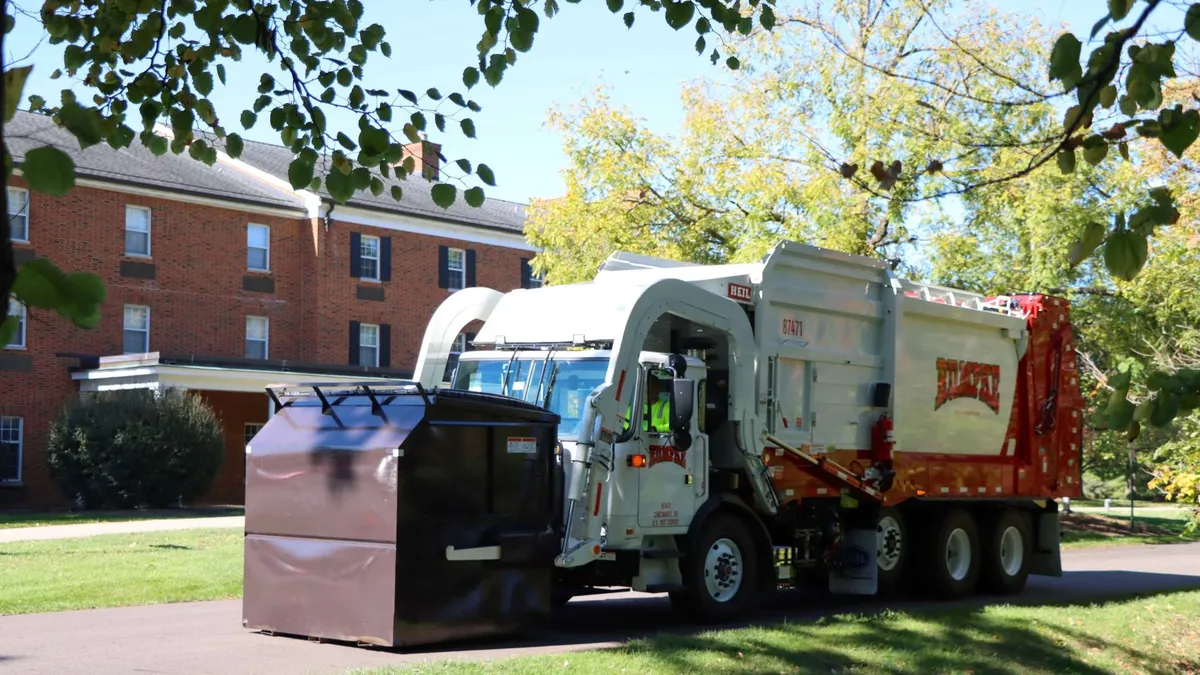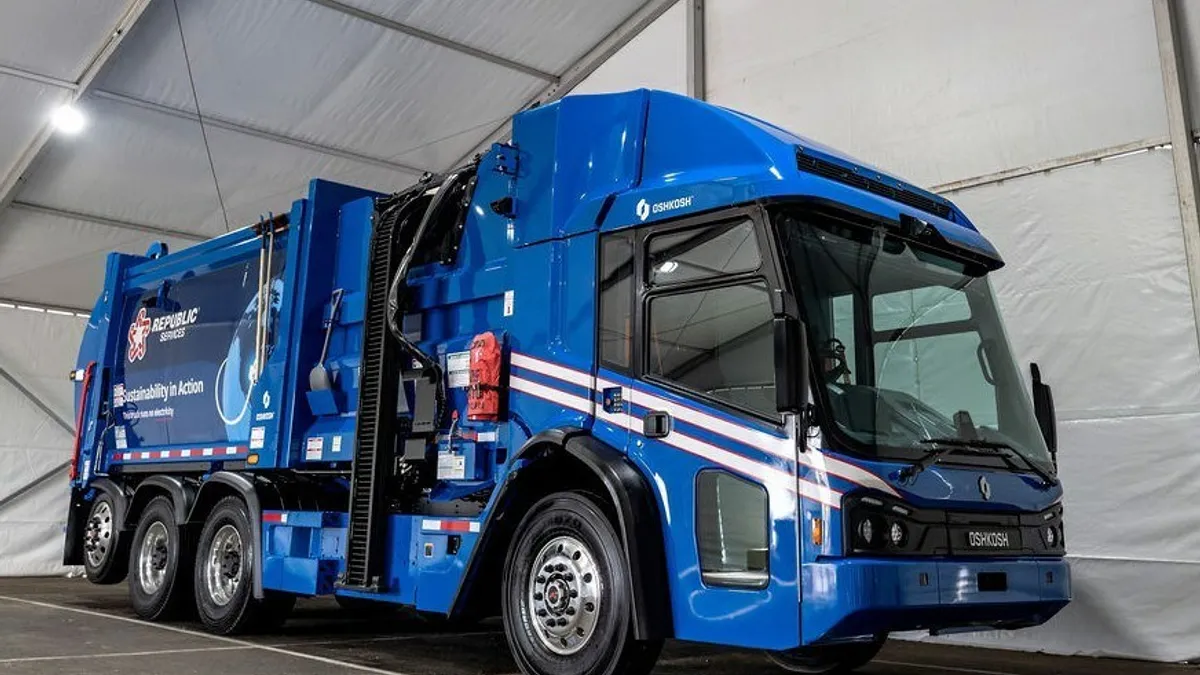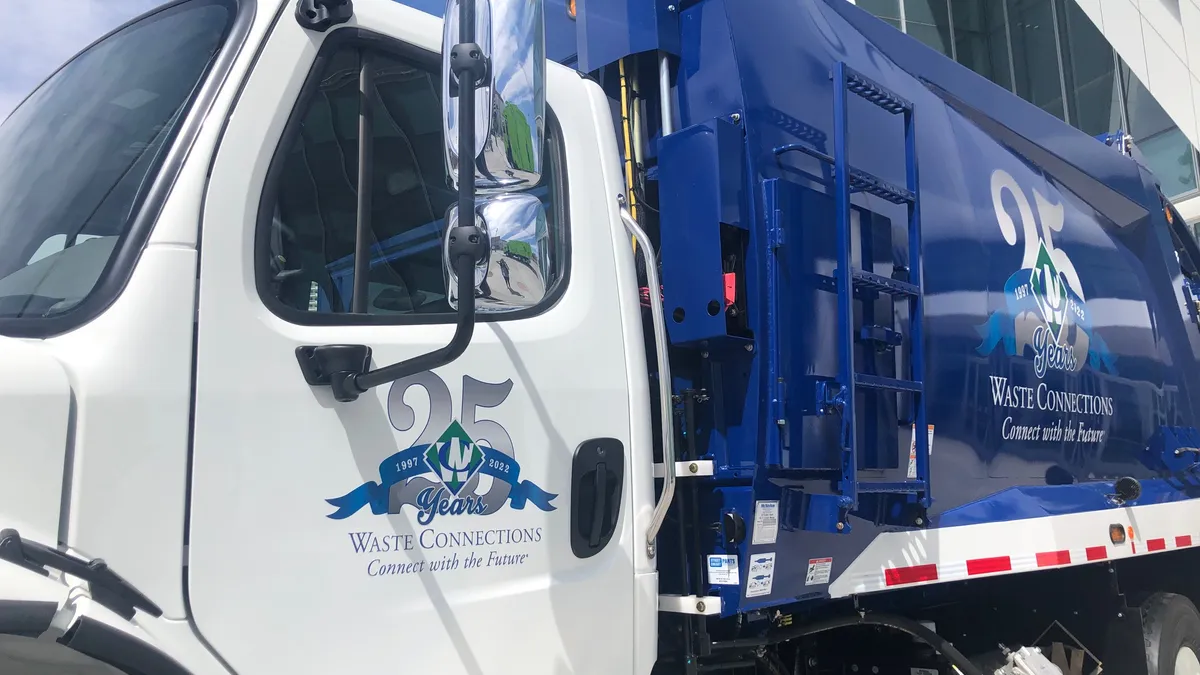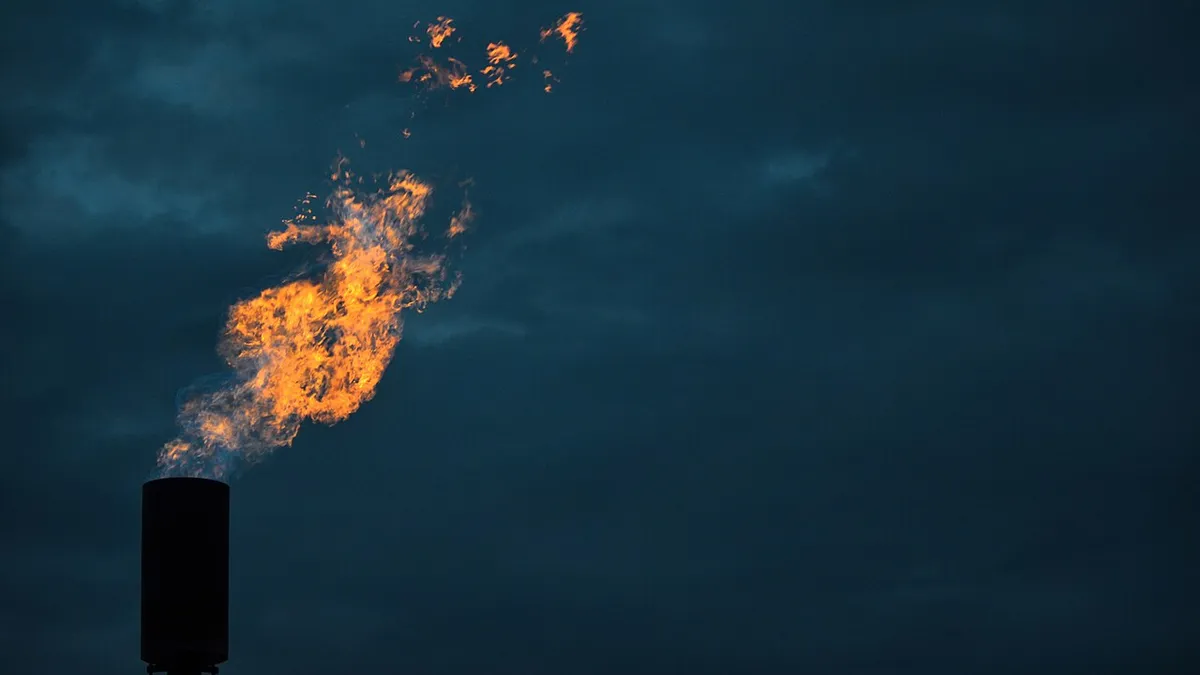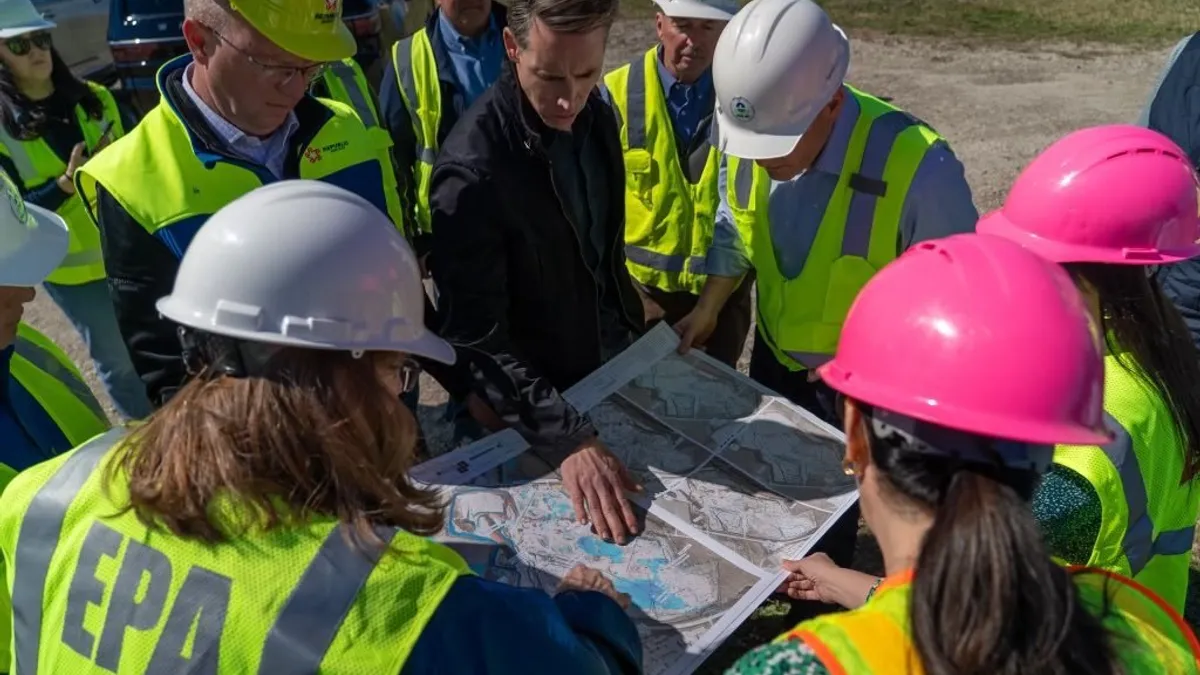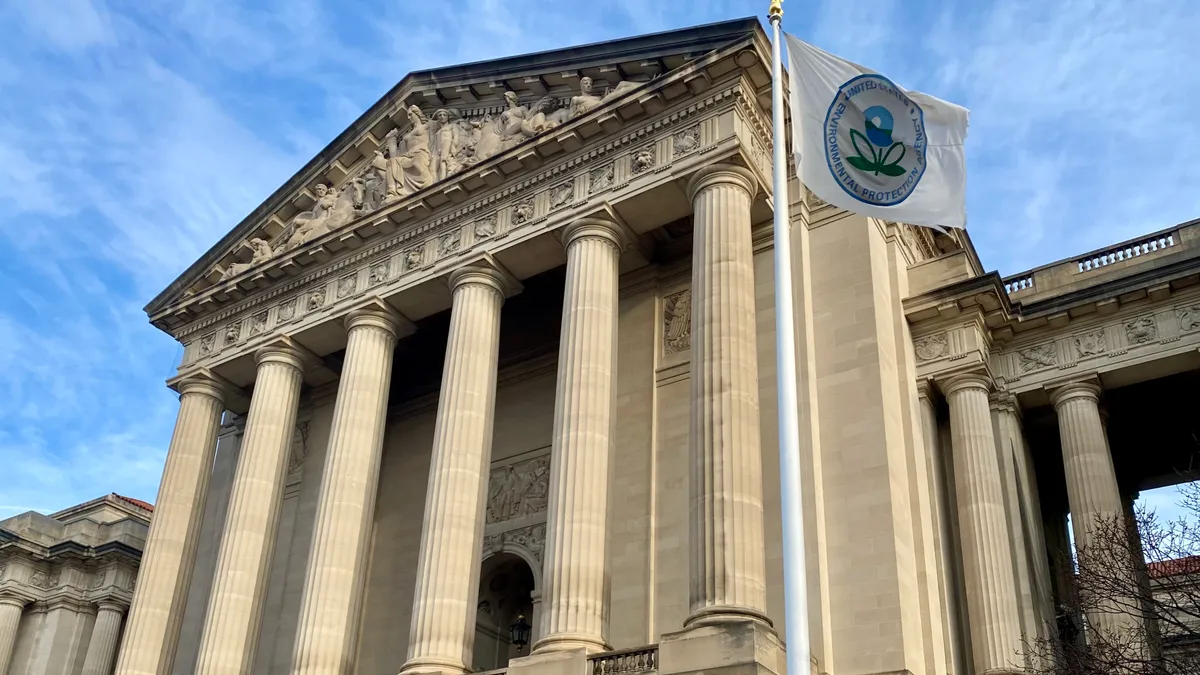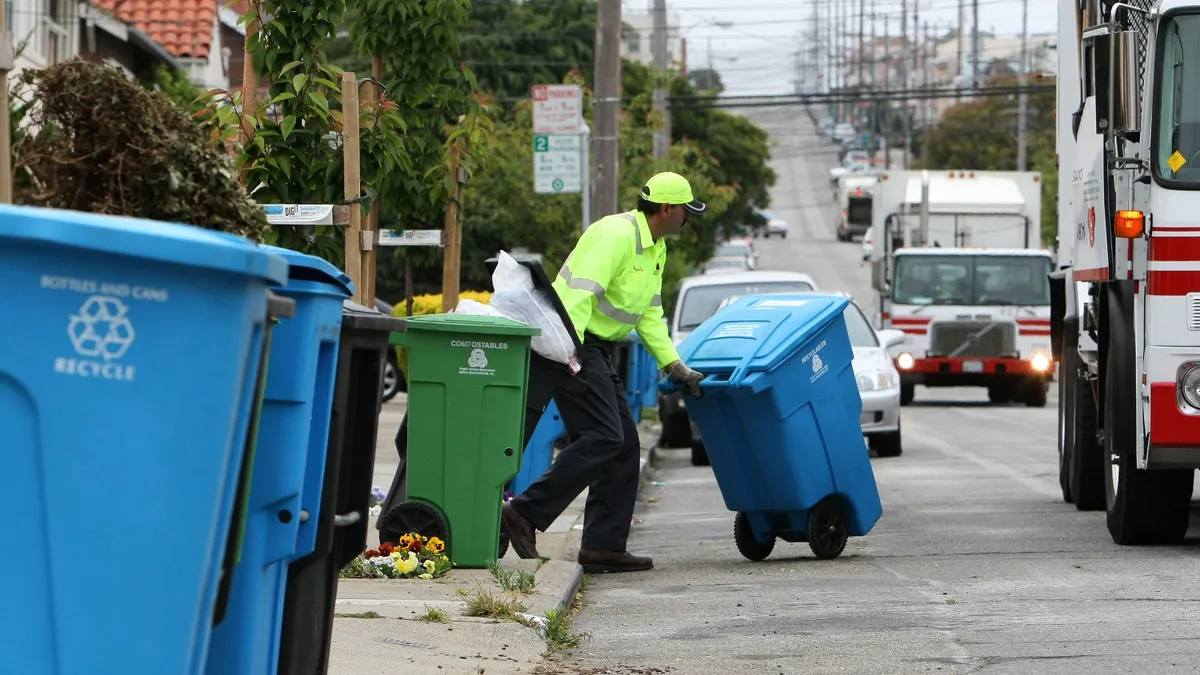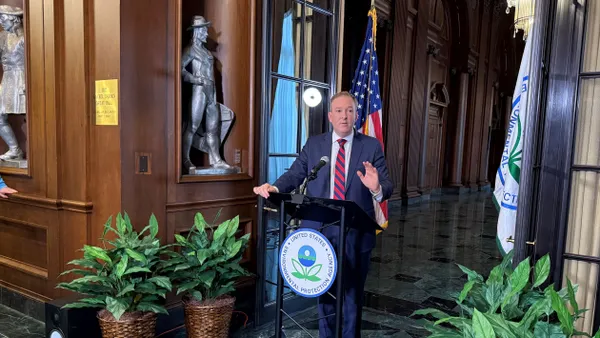A new report is calling into question the efficacy of Oregon’s uniquely strict landfill emissions monitoring rule. Legislation enabling greater monitoring capabilities, plus an increase in enforcement, may help address the rule’s gaps.
Private landfill operators are exempting large swathes of their facilities from Oregon’s tight emissions regulations, shrouding potential sources of greenhouse gas emissions, according to a report from environmental group Beyond Toxics.
The finding comes after Oregon regulators implemented a rule in 2021 that required more landfills to monitor methane emissions and install a gas collection and control system if they exceeded certain levels. It also tightened monitoring requirements for large landfills already tracking their emissions.
Landfills subject to more stringent monitoring requirements began reporting regularly to the state’s Department of Environmental Quality in 2022. But Beyond Toxics said that three of the 11 landfills that should have been reporting those emissions were not. And private landfill operators were exempting nearly half their surface areas from monitoring requirements, while public landfill operators were exempting about 10% of their landfills from the requirements.
Waste Connections exempted the most surface area of any operator — about 70% of its Dry Creek Landfill was not monitored for surface emissions in 2023, Beyond Toxics found. The company, which operates two other landfills in the state, did not respond to a request for comment.
Those large data gaps lead to questions about whether private operators are following the spirit of the law, said Mason Leavitt, a data analytics specialist at Beyond Toxics who led the report.
“There's not any real accountability here,” Leavitt said.
Oregon’s rules are the strictest in the nation for landfill emissions. They stem from a 2020 executive order signed by then-Gov. Kate Brown addressing the state’s greenhouse gas emissions. The order set a goal to reduce the state’s greenhouse gas emissions by 45% by 2035 and by 80% by 2050, compared to a 1990 baseline. It specifically called for action on methane gas from landfills.
Federal rules regarding landfill gas emissions regulate based on the generation of non-methane organic compounds. They do not require action based on methane generation. But methane is a climate pollutant more than 80 times more potent than carbon dioxide over 20 years, leading multiple states, including Oregon, California, Maryland and Washington, to set their own standards that are more stringent than the U.S. EPA’s. Those rules have specific triggers based on methane generation rate to address greenhouse gas emissions.
Environmental groups say enforcing those rules is paramount to see meaningful improvements, but that has proven difficult for regulators. Beyond Toxics’ analysis of annual and semi-annual emissions reports from landfill operators in Oregon revealed gaps in enforcement of the state’s rule.
Landfills that have at least 200,000 tons of waste in place and generate more than 664 tons of methane annually must submit quarterly monitoring reports unless they are in the process of installing a gas collection and control system, per Oregon rules. Two landfills that meet the threshold to submit those reports received reporting exemptions from the state in 2023.
But one, the Roseburg Landfill owned by Douglas County, appears to have avoided submitting monitoring reports altogether in 2023 despite meeting the threshold, flouting Oregon rules.
That landfill generated the second-most methane of any landfill in the state in 2022, per state records obtained by Beyond Toxics. Republic Services' Coffin Butte Landfill generated the third most emissions while WM's Columbia Ridge Landfill generated the most, per state records.
Private operators didn't measure emissions at large sections of their landfills
A spokesperson for DEQ said Douglas County had personnel changes shortly after the rules were issued and officials there initially failed to understand the new requirements. The department said it "investigated and informed the landfill of the missed requirement, [and] the landfill initiated surface emission monitoring in the second quarter of 2024."
The landfill has a gas collection and control system that predates the new rules. Douglas County is now in the process of bringing it into compliance — it must submit a design plan by June 7 and ensure the system is up to code and operational by Dec. 7, 2026.
So far, no landfill operator has been fined by DEQ for being out of compliance with the rule, according to the agency. Leavitt said the lack of enforceability of Oregon’s rules is contributing to a culture of neglect. He noted the EPA also lacks the resources to follow up on landfills’ emissions monitoring and capture systems even when it detects compliance issues.
Republic Services’ Coffin Butte Landfill in Benton County, Oregon, is one such example, according to Leavitt. EPA inspectors have visited the landfill twice in recent years. A 2022 inspection report from the agency documented instances where vegetation broke through the landfill’s cover. Elsewhere, gas extraction wells that are meant to pump methane into the landfill’s control system appeared to have been damaged or failed. The EPA found similar issues in a follow-up visit two years later.
Those breaks can lead to significant methane leaks. In one area, a cap had come off a gas extraction well that was sending methane directly into the air, per the EPA’s 2024 report. The well was emitting more than 118,000 parts per million of the gas, 236 times the federal limit. The EPA inspector found 41 methane leaks exceeding the limit in total at the landfill.
The agency has yet to publicize an enforcement action against the company. The EPA did not respond to a request for comment or update on its enforcement work at the Coffin Butte Landfill.
Republic Services insists it’s operating the landfill responsibly and addresses leaks as soon as possible, per an emailed statement from Melissa Quillard, a senior manager of external communications for the company.
Quillard said Republic does not exempt areas of the landfill to avoid reporting emissions, but said vegetation and the landfill's transitional cover, which "can become slick and unsafe for our employees and consultants tasked with collecting surface emissions data," have caused challenges.
"We are exploring solutions that will allow us to safely monitor all these areas to help reduce the amount of exempt acreage in the future," Quillard said.
Leavitt said the lack of consequences for landfill operators means that even well-meaning rules can fall short of their intentions.
“I think Coffin Butte is actually on some level benefiting from this, because they've had those inspections and there's been no action as a result of it,” he said. “They're able to say over and over again, to the best of our knowledge, the EPA is satisfied with our compliance and our work.”
To address some of these issues, Beyond Toxics is backing a bill that would allow landfill operators to use alternative monitoring technologies like drones and planes. The Oregon Senate Committee on Energy and Environment held a hearing on the bill last week. It would also require the use of such technologies in areas where people can’t walk, which Beyond Toxics hopes would eliminate the exemption issues uncovered by the group’s report.
The rule could shed new light on landfill emissions in the state moving forward. The Hillsboro Landfill, run by WM, is set to begin complying with the new monitoring requirements this year. And despite community opposition, Republic Services recently completed a revised expansion application for the Coffin Butte Landfill. If the application is approved, more methane-emitting waste could be deposited in the landfill for another six years.







